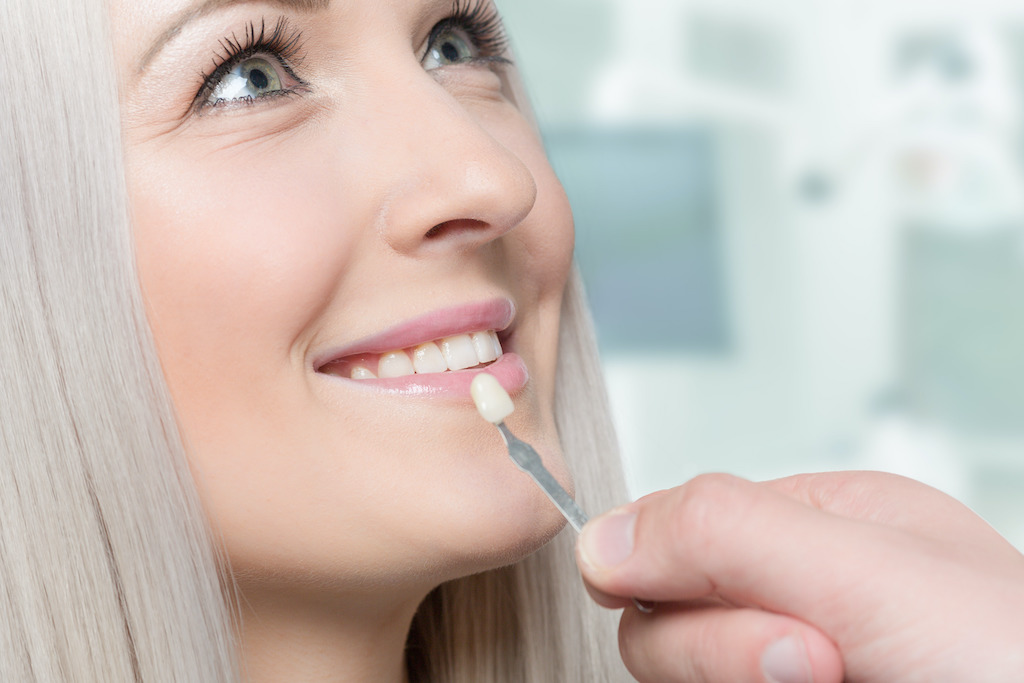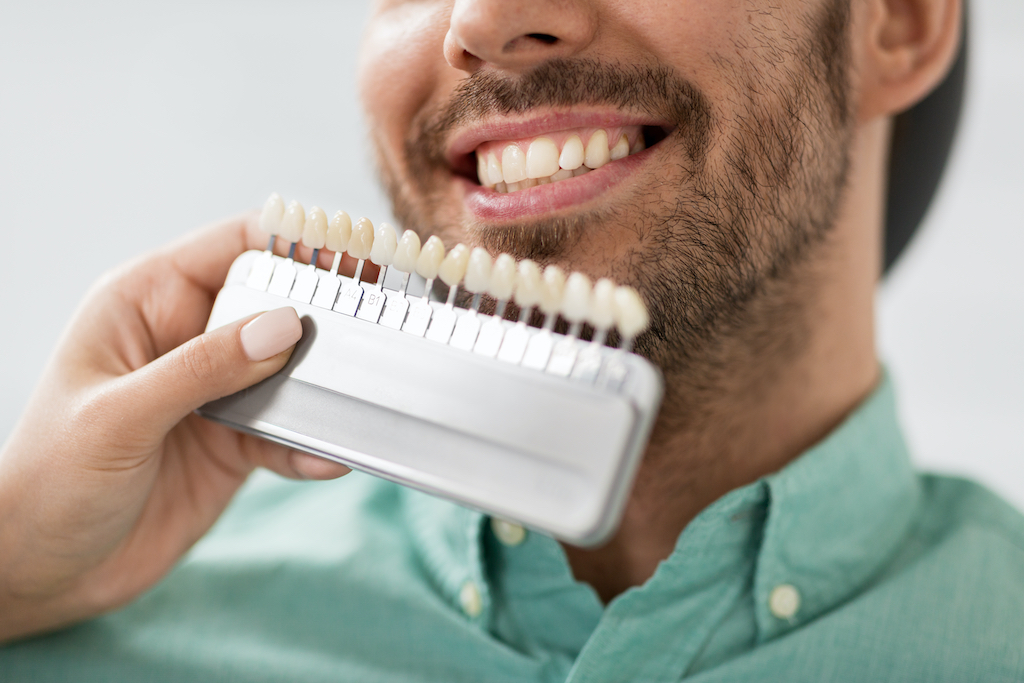Dr. Roberto Macedo is the new generation of specialists, a prosthodontist, a true smile designer. He brings an energetic collaborative approach that applies to each of his patient’s dental needs and desires. Dr. Macedo is a prosthodontist who specializes in tooth replacement and restoration. He has over 20 years of experience providing high-end cosmetic dentistry for satisfied patients. He is proud to be a third-generation dental specialist and feels his high standards are a direct result of being involved in all aspects of dentistry from a very young age.
 Photo Credit: Shutterstock
Photo Credit: Shutterstock
Dental veneers are thin, tooth-colored “shells” that are attached to the front surface of teeth to improve their appearance. They’re often made from porcelain or resin composite materials and are permanently bonded to your teeth. Veneers can be used to treat a number of different cosmetic concerns, including chipped, broken, discolored, or smaller-than-average teeth.
Some people may only get one veneer in the case of a broken or chipped tooth, but many get between six to eight veneers in order to create an even, symmetrical smile. The top front eight teeth are the most commonly applied veneers. Dental veneers are most commonly made out of porcelain. Veneers, when done right should enhance your natural smile, not look fake.
Veneers aren’t the same as tooth implants or crowns. Veneers cover the front surface of the tooth. Implants, on the other hand, replace the entire tooth. Crowns also encase the entire tooth, while veneers only cover the front surface of the tooth (which is visible with a smile).
Veneers aren’t often covered by insurance, as they’re considered a cosmetic procedure traditional veneers can cost an average of $1050.00 to $2,500 per tooth and can last 10 to 15 plus years. The cost of your veneers can depend on the area in which you live and the expertise of the cosmetic dentist.
Before you get your veneers, you will have a preliminary appointment with your cosmetic dentist to discuss which options are right for you and how many veneers you want to have placed. Your cosmetic dentist will often take X-rays at this stage to evaluate your teeth’s health. They will look for signs of tooth decay, gum disease, or the need for root canals. If you have any of these conditions, you may not be a candidate for veneers.
 Photo Credit: Shutterstock
Photo Credit: Shutterstock
To get accurate sizing for your veneers, at the next appointment, your cosmetic dentist may trim down about a little of your tooth before they take a mold (impression) of your teeth. This mold is then sent off to the lab for the creation of your veneers. Temporaries are made in the office and placed on your teeth (often they look better than the natural smile you started with) It typically takes between one and two weeks after your dentist creates your mold to get your veneers back from the lab. Once your veneers are in, you can schedule an appointment to have them placed. At this appointment, your dentist evaluates the fit, shape, and coloration of the veneers to make sure they are perfect for you.
Next, your cosmetic dentist thoroughly cleans your teeth. This is important, as it keeps bacteria from being trapped under the veneer and causing decay. Your cosmetic dentist then uses dental cement to bond the veneer to the tooth. They’ll use ultraviolet light to harden this cement quickly, and once you leave the office, your new smile is ready to go!
Unlike other dental procedures, the recovery process does not take an extended amount of time. Instead, once the veneers are cemented on and any anesthetics wear off, you can eat and chew as you normally would. While the anesthetic is wearing off, be conscious of not chewing on your cheeks or tongue.
Traditional porcelain veneers typically last between 10 and 15 years. Taking certain precautions can help make sure that you get the longest lifespan out of them possible. These precautions include:
• Don’t chew on hard objects like pens, ice, or your fingernails.
• Never use your teeth to open packaging or condiment packages.
• Try not to chew with your front teeth. Eat harder foods with your back teeth only; cut up hard foods like chocolate bars so that this is possible.
• If you grind or clench your teeth at night, get a splint or retainer to protect your veneers.
• If playing sports, you must wear a mouthguard.
Feel free to contact me if you are interested in a new smile!
Roberto Macedo DDS MS PhD
Prosthodontist & Smile Designer
7801 38th Ave. N
St. Petersburg, Florida 33710
727-345-2064





















